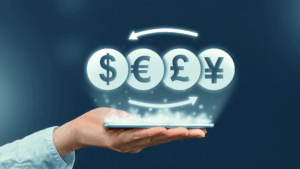What is Value?
Recently, I’ve been involved in 3 different conversations on LinkedIn about this topic. One of them I intentionally initiated because I was hoping to understand the different perspectives out there, especially from my pricing colleagues.
This article categorizes and summarizes different perspectives. To be completely fair, at the end of the article you can read what individuals wrote in their own words. Some of the responses were hard to categorize, so feel free to draw your own conclusions.
Here is the post that got the ball rolling.
What is Value? What is Value-Based Pricing?
These phrases are used a lot and many of us have different meanings when we say them. Would you please share with us your definition of these two terms? Please use words that are clearly defined. I think (hope) we all have a common understanding of the following terms in case they are part of your definition:
- Willingness to pay: The most someone would pay for a product in a given situation.
- Inherent value or value in use: The value of using a product or solving the problem. Air has infinite value in use.
- Relative value or value in choice: The value of something relative to the alternatives. Air has zero value in choice.
- Willingness to accept: The least a company would accept for their product. Typically this is above their costs.
I will post my definitions in the first comment so you can read them first or wait and read them after you’ve added yours. Also, please forward this link to any pricing professional you know. I will collect and publish the responses unedited. Thank you.
The following three definitions of value got multiple “votes” each.
Value is Value in Use or Inherent Value
This was the most popular answer with 10 pricing professionals stating some version of this. If you add up all of the benefits you get from using a product, the value of those benefits is value in use. In B2B this is easier to understand.
Imagine you invent a machine that will make a buyer $1M in additional profit (and that $1M captures all of the benefits the buyer receives). According to this definition, the Value is $1M.
Value is Willingness to Pay
6 pricers provided an answer along these lines. The common theme is that taking into consideration all of the buyers’ perceptions and considerations, including competition, their willingness to pay is a good indicator of how much they value a product.
Let’s go back to the new B2B machine.
The buyer may believe there is some risk they will not actually get $1M worth of benefit. They think, “I would only pay $200K for that new machine because of the risk I’m taking.” That means they value the machine at $200K. Alternatively, imagine there is a competitor that sells a similar machine for only $100K. Now how much would the buyer pay for our machine? Maybe $110K because ours is better. That means the buyer only values our machine at $110K. I like this definition because it helps us understand value based pricing better, and it takes into consideration the fact that uncertainty and competitive alternatives keep us from capturing all of the value in use we create for a customer.
Value is Consumer Surplus
The responses from 4 pricing professionals indicated consumer surplus as the definition. Consumer surplus is the inherent value of a product in dollars minus the price you had to pay.
Back to our machine example.
Imagine you invent a machine that will help your customer make $1M. That’s the value in use or inherent value. However, you have competition so you can’t charge anywhere near that. You charge $110K. That means the consumer surplus here is $890K. Think of this definition of value as how much more a buyer receives than what they paid. This is typically the thinking behind the words, “that’s a good value.”
(There were two responses I couldn’t categorize into one of these three definitions. You can read them below.)
The Takeaway
The takeaway from this article is this: Value is an ambiguous word and even pricing professionals don’t agree on the meaning. If someone uses the word, and it’s in an important context, ask what they mean. Better yet, agree on a definition if you’re going to work with someone regularly.
I think I’ll work on a set of definitions for my students.
What follows is the collection of answers sorted by category:
Value is Value in Use
Vignesh Thiyagarajan
My take is that value pricing is a process/exercise to uncover and triangulate:
Need (customer’s problem – aware or unaware),
Value (perceived and economical benefit of solving the problem),
and WTP (trade exchange ($ in most cases) of a person or an organization who has the need).
—Time Bound–
Arriving at a price point and a deal is an outcome of the exercise.
I have seen cases where quantified value is much higher than WTP (negotiated price point here). So I would keep them separate.
Counter argument – We can also argue that if they are unwilling to pay then it is not a value.
David A. Richards MBA
Mark Stiving, Ph.D. Mark, I must also add a definition from an Australian LI connection of mine who has great wisdom and insight.
Peter Strohkorb, GAICD says ‘Value is about selling the benefits of the benefits.’
Kota Siva S Sarma
I define value as “sum of benefits expected from use of a product over its useful life, measured & expressed in monetary terms”. This is the intrinsic value of the product, also called as Value in Use.
Buyer’s Perceived Value is usually different from that of Seller due to various reasons like relevance of benefits to his business case, information asymmetry, risk factors in the business etc.
WILLINGNESS-TO-PAY (WTP) is what a buyer is willing to give up (pay) in exchange for the above value. WTP is usually less than the intrinsic value of the product as any buyer would like the benefits of a product outweigh the costs of acquiring it.
CONSUMER SURPLUS is customer’s WTP minus the actual price paid for a product. Actual Price may be less due to the competitive situation, negotiating power, supply/demand situation, Seasonality of the business, Information Asymmetry etc.
Jon Manning
For me, value is the collective and subjective outcomes of the features and benefits of a product or service. Value-based pricing is the process of creating pricing architecture (structure, price points, T&Cs) that seeks to capture that value. In the B2B world that value is quantified & captured as increases in revenue, reductions in costs or risk minimization. The same sources of value can be found in B2C markets, where intangible value may also exist.
Natalie Louie
What is value?
Value is your customer deliverable. The goal of every company, product or service is to deliver value to their customer.
What is value-based pricing?
It is making sure your customer has an ROI on the price they are paying for the value they are getting. ROI can be based on dollars saved, time saved, disasters avoided, efficiencies gained…etc.
Patrick J. Taylor
Excellent discussion! I see value based pricing and market based pricing as being situational behaviors of the same customer depending on the transaction’s timing. For example, the customer initially assesses budget versus solution attributes and the personally relevant benefits; value base pricing. Then the same customer shops for the best price among all competing solutions as defined initially; market based pricing.
Saul Dobney
Value is the utility that you get out of something all things considered. Price is the disutility that you have to pay in return. Value-based pricing is pricing according to the value the customer believes they receive, rather than fixing it to the cost of provision.
For consumers, fashion and art are the classics for value-based pricing where it is the image or style that is paid for, not the physical material. The underlying utility has an element of social acceptance or kudos or personal service which is outside the pure function of the purchase.
For businesses, reliability drives value more – so quality of supply above the quality of the product – eg on-time-in-full delivery, up-time, minimal defects, ease of handling, throughput, safety and flexibility – factors that would otherwise create additional hidden costs, hence the idea of value-in-use.
The additional implied utility of ‘value’ is often external to the core product. So the role of value-based pricing, shouldn’t just be to put prices up, but also aim to identify, develop and ensure delivery of the drivers of value, knowing what to prioritize and what has to be right and what can be dropped or de-emphasized.
Bill Luckinbill
Customers buy solutions to problems. Whether this is a product that they intend to re-sell, thereby making profits or a service that makes their life better, they are seeking something to reduce the pain produced by this problem. Customers (buyers) will ONLY buy when the pain forces them acquire a solution. Often, buyers seek a solution before the pain has reached a level that they are willing to address. Value is when the cost of the solution has exceeded the pain.
Benoît Donze
Here is my #value proposition!!
Value = customer perception of benefits/importance offered by a product or service.
Value based pricing = the use of customer perceived benefits/importance offered by a product or service to set the price.
Karthik Narayanaswamy
Value is subjective – but it’s a combination of functional, emotional, and the social utility that the customer derives from an offering. Value based pricing is the art of maximizing and sustaining the economic value ($) for the merchant in a transaction.
Value is Willingness to Pay
Mark Stiving, Ph.D. Author
Value: What a buyer is willing to pay
Value based pricing: The act of trying to charge what buyers are willing to pay.
Adam Guerriero
I think value based pricing is The act of trying to charge “The Highest amount” a buyer is willing to pay. That clause Highest amount, is what makes pricing very challenging, and speaks to price optimization for corporate sales and margin
Ed Kless
At VeraSage Institute we use “perceived value” to denote the maximum price that a customer might pay. (Note – they would never actually pay this amount, but it is the the theoretical maximum.)
Our definition of a “value price” is a price in which the primary, but not sole determining input, is the perceived value of the customer.
In addition, we have taken to the following phrase – “Value is a feeling, not a number.”
Sebastian Wrobel
Vignesh Thiyagarajan, Mark Stiving, Ph.D. Tim J Smith you are absolutely right. The value perceived by the customer in many cases can be higher compared to negotiated price point.
Value pricing (in B2B) means to me:”to determine the winning price + T&Cs for the value perceived & communicated.”(and yes, the value promise shall also be delivered to ensure consistence + recurring business opportunity)
Some considerations related to above:
- the value needs to be communicated to customer
- this requires understanding of value drivers, which are customer segment and opportunity specific and may change over time
- this typically translates in the customer’ willingness to pay*
- the ability to capture 100% or most of the willingness to pay is highly dependent on negotiation skills of sales
- and last but not least I believe – and this is more the art than science in pricing – that there are non quantifiable dimensions of value perceived (even in B2B), which are of subjective and emotional nature.
*in correspondence with competitive reference/benchmark
Mark Boundy
Value is desirability of customer outcomes.
Customers buy outcomes, not our products and services. What they are willing to pay – value — depends on desirability of those outcomes. Desirability can be measured in dollars.
Pricing to that value involves a decision about how to split that value with the customer (sellers share = price premium over best available option)
María Agustina Zabala
In my point of view, economically speaking, “value” is what you are willing to pay for a certain product/ service. It also depends on perceptions, education, situational facts… significantly subjective (fully aligned with Juan and Martin).
“Value-Based Pricing” is the art of persuading customers about the benefits/ value, our products/ services may imply for them and “justify” in this way, what they should have to pay in return.
Value is Consumer Surplus
Tim J. Smith
From an economic viewpoint, Value = Benefits – Price, a definition that effectively makes Value = Consumer Surplus if Benefits is defined as the Demand Curve. More usefully for pricing and positioning, one would speak of Differential Value as the difference between the Differential Benefits and the Differential Price between an offering and its competitor.
While the above definition of value is useful for thinking of pricing, positioning, and promotion, it is definitely not the only sense in which the term “value” is used. For instance, I have seen value defined as the ratio of benefits to price, an interesting approach but not as analytically useful. Other marketers use the term “value” to mean “low priced”, which has very different implications. And, in the back of my mind, I still think of “value” as those things, morals, and behaviors which have worth in creating a meaningful and fulfilling life.
Good luck trying to create a single definition of a multipurpose word like “value”.
David A. Richards
The definition of value I like is… Value = perceived, relevant and distinct benefit minus the total cost of ownership.
Value-based selling is the process of enabling a current or future customer to understand, quantify and act on the value you can offer their business, therefore increasing their willingness to pay for your product, service or professional expertise.
Jigar Shah
Value is “desired” outcome for a buyer, and is “perceived” delivery of outcome for a seller.
Value based pricing is then, putting a number on a transaction that is “desired” by the seller, and the buyer walks out happily with the equation ‘Maximum Value = Benefit Received – Price Paid’.
Joshua Parks
This is an excellent example of the value of LinkedIn for young professionals (& old ones too). I’m going to abstain from weighing in on the definitions while throwing support behind any conversation of Consumer Surplus. (This is one where you have to read all the comments)
Value in Choice – Relational Value
Scott Francis
Good discussion. Value is the economic amount by which your customer benefits from buying your product or service compared to their next best alternative. Value based pricing is the process or structure that sets prices to capture that value.
Value is Profit for the Seller
Peter J. Nadolny
Great comments so will try not to duplicate. Value = Profit, from a supplier/stake holder perspective. Value is relative to the buyer and the circumstance. So, value based pricing is setting a price that is based on buyers and circumstances that allow the supplier to maximize profits.
An example is wine sales at an upscale restaurant. The buyer preferences and circumstances allow for value based pricing, which in turn boosts profits (increases value) for the supplier/stake holders.















